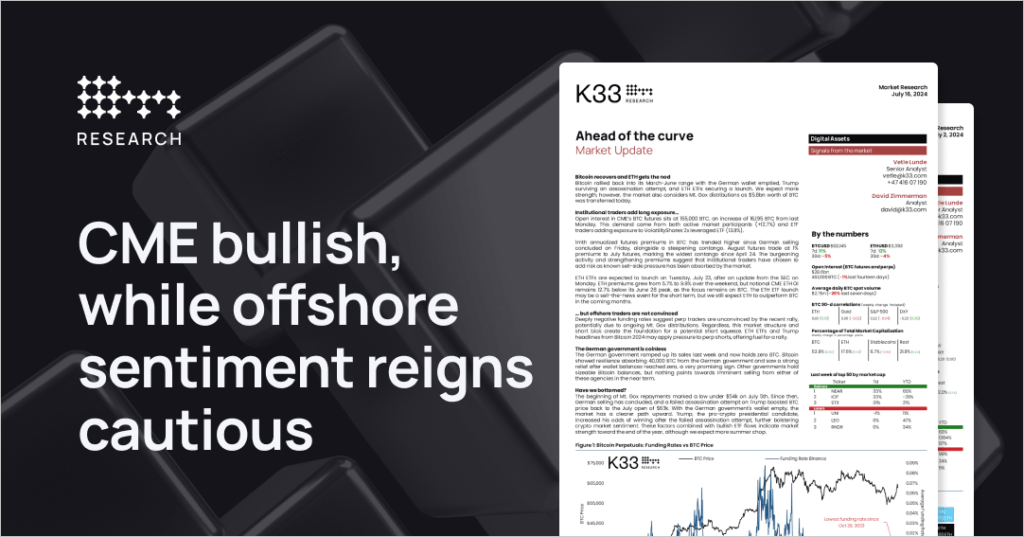Research Summary
The report introduces a new Risk Assessment framework for analyzing the state of the Bitcoin market. It uses on-chain data to assess the risk of a major drawdown in Bitcoin’s spot price. The framework covers both short-term and long-term risk cycles and includes a variety of data categories such as price deviation, supply profitability, fear and greed sentiment, and investor behavior.
Key Takeaways
Framework for Risk Assessment
- Introduction of a New Model: The report presents a new Risk Assessment framework that uses on-chain data to evaluate the risk of a major drawdown in Bitcoin’s spot price. The framework covers both short-term and long-term risk cycles.
Price Bubble Indicators
- Monitoring Price Deviation: The report uses two models, MVRV and Mayer Multiple, to monitor the deviation of price from long-term mean reversion baselines. These models help identify high-risk and low-risk market environments.
Supply Profitability
- Assessing Selling Pressure: The report uses the Percent of Supply in Profit (PSIP) metric to identify the potential risk of increased selling pressure. This metric measures the proportion of coins with a cost-basis lower than the current spot price.
Fear and Greed Sentiment
- Quantifying Market Sentiment: The report uses the Net Unrealized Profit/Loss (NUPL) metric to quantify the associated risk with growing Fear and Greed sentiment in the market. This metric examines the dollar value of the total net profit or loss as a percentage of the market cap.
Investor Behavior
- Tracking Spending Patterns: The report uses the Realized Profit/Loss Ratio (RPLR) to assess how market participants are adjusting their spending patterns. This indicator tracks the ratio between profit taking, and loss taking events occurring on-chain.
Actionable Insights
- Utilizing the Risk Assessment Framework: Investors and analysts can use the new Risk Assessment framework to evaluate the risk of a major drawdown in Bitcoin’s spot price. The framework provides a data-driven model for assessing market risk.
- Monitoring Price Deviation: By monitoring the deviation of price from long-term mean reversion baselines using the MVRV and Mayer Multiple models, investors can identify high-risk and low-risk market environments.
- Assessing Selling Pressure: Investors can use the Percent of Supply in Profit (PSIP) metric to identify the potential risk of increased selling pressure. This can help them make informed decisions about when to buy or sell.
- Quantifying Market Sentiment: By using the Net Unrealized Profit/Loss (NUPL) metric, investors can quantify the associated risk with growing Fear and Greed sentiment in the market. This can help them understand the overall market sentiment and make informed investment decisions.
- Tracking Spending Patterns: Investors can use the Realized Profit/Loss Ratio (RPLR) to track how market participants are adjusting their spending patterns. This can provide insights into macro shifts in investor behavior.








